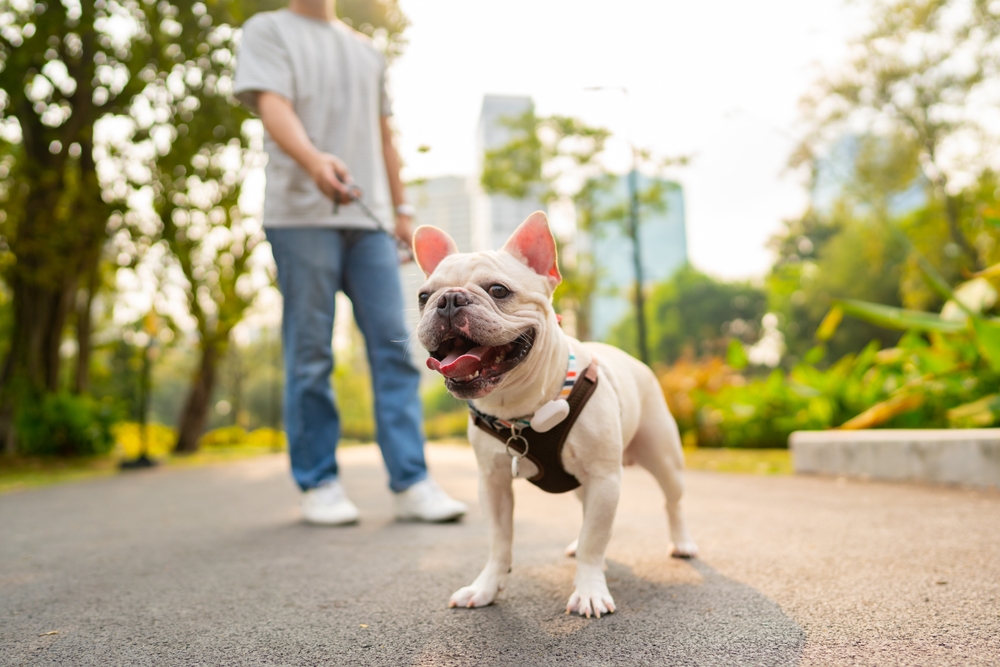Excessive heat and humidity can be dangerous for pets, especially those with short noses, excess weight, or chronic disease. Understanding high summer temperatures’ hazards can help you take the necessary precautions to keep your furry pal safe. Our Family Pet Care team explains heat-related summer dangers and provides tips for keeping your pet safe when temperatures rise.
Pet heat-related dangers
You need to consider your pet’s safety year-round. However, summer poses unique hazards that can negatively affect your furry pal’s well-being. High heat, especially when combined with high humidity, puts pets at risk for the following:
- Heatstroke — Heatstroke is a life-threatening condition that occurs when a pet’s body temperature rises several degrees above normal. Pets cannot sweat to cool down, making them more susceptible than people to overheating. Heatstroke signs, including excessive panting, drooling, lethargy, vomiting, diarrhea, rapid heart rate, red gums, or collapse, require immediate veterinary care.
- Dehydration — Pets lose water when panting to cool down, which can lead to dehydration in extreme heat. Symptoms include dry gums, ropy saliva, sunken eyes, and weakness. When accompanied by electrolyte imbalances, dehydration can lead to seizures or heart arrhythmias.
- Burns — Hot pavement, sand, and other sun-warmed surfaces can burn your pet’s paws or skin, causing blisters, pain, and limping. Severe or extensive burns can leave pets vulnerable to serious infections.
- Sunburn — Pets with thin fur, no fur, or exposed skin areas are at risk for sunburn, which can cause pain and increase their ultraviolet (UV) ray damage or cancer risk over time.
Pet heat safety tips
Although the Texas heat is extreme, you can prevent your pet from experiencing heat-related illnesses and injuries. Consider these summer pet safety tips:
- Know your pet’s limits — Pets with short noses, excess weight, breathing disorders, chronic diseases, or fluffy coats may be more susceptible to heat stress than others and require more supervision and special accommodations. Seniors, puppies, and kittens may also struggle to regulate their body temperatures.
- Provide water — Ensure your pet can access fresh, cool water by placing multiple bowls around your home and yard.
- Limit outdoor time — Avoid exercising or leaving your pet outside during peak daytime heat. Instead, take walks or play outside early in the morning or late in the evening.
- Never leave pets in parked cars — The temperature in a parked car can reach a deadly level in only a few minutes. Never leave your pet unattended in a vehicle.
- Use pet-friendly sunscreen — Protect exposed skin by applying pet-safe sunscreen. Pets may lick sunscreen from their skin, and many human products are harmful because they contain ingredients that are toxic to your furry pal. Always choose a sunscreen formulated specifically for animals.

- Provide shade and cool areas — Ensure your pet can access shade outside and provide cooling areas using pools, sprinklers, or cooling mats. Always supervise pets outside to ensure they do not overheat.
- Avoid hot pavement — Walk your pet on grassy areas when possible, and consider outfitting them in protective booties if asphalt or other hot surfaces are unavoidable. Summer booties should be breathable to avoid contributing to overheating.
- Monitor pets closely — Watch pets closely for heatstroke or dehydration signs. If you suspect a problem, move your pet to a cool area, drape them in cool, wet towels, and contact our team.
- Allow pets to acclimate — If new to the area or when the seasons are transitioning from cool to warm, pets need time to acclimate. Gradually increase outdoor time over a few weeks, especially for dogs who participate in sports or other high-energy activities.
- Groom pets regularly — Regular grooming helps maintain your pet’s coat and reduces their overheating risk. However, avoid shaving your pet, which can reduce their coat’s naturally protective and temperature-regulating qualities.
The summer months pose numerous heat-related risks for pets, but by taking precautions, you can help keep your furry pal safe and comfortable. Contact our Family Pet Care team for additional heat safety tips or to schedule an early summer pet checkup.

